#West Africa Squadron
Text
youtube
The British Crusade Against Slavery | Sargon of Akkad
What really bothers me is Frankie Boyle's attempt to make British people feel ashamed of Britain's involvement in the slave trade.
That really gets my goat because Britain's involvement in the slave trade is one of the most proud accomplishments of British history.
And i know what you're thinking: oh my, goodness slavery is bad. And that's correct.
Which is why the British ended it.
For everyone.
[..]
The Portuguese did take a few Africans back to Europe, but they didn't need to set up operations, because they discovered that there were already thriving slave trades in Africa.
And so they bought slaves from African rulers and traders. The vast majority of slaves taken out of Africa were sold by African rulers, traders and military aristocracy who grew wealthy from the business. Most slaves were acquired through wars or by kidnapping.
And before you start thinking that this is excessively barbaric,
this was the standard for almost every civilized society all across the world.
[..]
The point is that slavery was ubiquitous. No matter where on Earth you traveled, you found slaves. In Europe, in China, in the Middle East, in the New World, in India, in Scandinavia, in Africa.
Slavery was as common an institution as animal husbandry.
[..]
The West Africa Squadron was a detachment of the Royal Navy that was given the task of blockading Africa, the continent, to make sure that slave traders were not taking slaves to the Americas.
Needless to say, in 1807 there was only a token force performing this operation, comprising of two ships. This number was increased to five ships until the war of 1812 with the United States, but after 1815 with Britain victorious in Europe and supreme at sea, the Royal Navy turned its attention back to the challenge.
The institution of slavery was formally abolished in the British Empire in 1833 and by the 1850s, around 25 vessels and 2 000 officers and men were on the station, supported by nearly a thousand "kroomen," experienced fishermen recruited as sailors from what is now the coast of modern Liberia.
[..]
All of this was done against the vested financial interests of hundreds of thousands of people. Entire nations were against the idea of abolishing slavery and the slave trade.
The very notion was alien to the human existence until Britain made it happen.
In the 19th century if you saw a ship bearing down on you flying this flag and you were a slave trader, you knew that this flag stood for liberty. This was the flag of a nation that defied human convention for a point of principle, and spent its blood sweat, tears and treasure to enforce it on the world.
This is the flag of the nation that accepted the absolute moral truth that slavery is wrong. No matter what riches can be amassed, no matter what power can be gained, no matter the cost, slavery had to be abolished. That was the British crusade.
When Britain held the reigns of world power, that is what she did with it.
Reaction:
youtube
youtube
#Sargon of Akkad#transatlantic slave trade#West Africa Squadron#Blockade of Africa#history#slavery#history of slavery#British crusade#religion is a mental illness
8 notes
·
View notes
Text
The Blanched Soldier
Originally published in 1926; the Americans actually got this one first by a month.
I have covered the Boer War extensively in a previous post, but will add some notes on items directly relevant to this story.
The Imperial Yeomanry were a volunteer i.e. not career military force of mounted infantry formed in 1900 as reinforcements in the Boer War. They were disbanded in 1908 and merged into the Territorial Force, a precursor of what is now called the Army Reserve.
Mounted infantry were infantry that travelled on horseback and fount dismounted. They continued in use into the Cold War, with some units also being "mounted" on bicycles on both sides of the Second World War, before being replaced with mechanised infantry.
Middlesex was the traditional county that covered much of the North and West of what is now Greater London; losing a large chunk of its territory and population to the London County Council in 1889. It was abolished in 1965, but remains very much a thing for sporting and cultural purposes, with its own county cricket team being just one example.
A martinet is a strict disciplinarian, the name coming for a type of short whip. Arnold RImmer from Red Dwarf is sometimes described as such, although the character is clearly meant to be quite pathetic.
The Victoria Cross is the highest British award for gallantry, equivalent to the Medal of Honor and like that medal, frequently awarded posthumously. It also usually requires multiple witnesses to the gallantry in question. It trumps absolutely everything bar the George Cross in the honours system, and it is traditional for a private with a VC to be saluted by a general officer.
The most recent VC was awarded to Joshua Leakey in 2015 for his involvement in a firefight with the Taliban in Afghanistan in 2013, where he took control of a machine gun left on a hill and kept firing even as bullets ricocheted off the weapon.
An elephant gun is a large calibre rifle intended for use against elephants and large animals. They saw some military use in the World Wars by the British against armoured German snipers in the trenches of the First and by the Italians against British armoured cars in North Africa during the Second. Since ivory hunting became taboo, they are much less common.
Bedford is a market town in England and county town of Bedfordshire. It has two stations, the main one being located on the Midland Main Line running into St Pancras. Served by Thameslink, East Midlands Railway and London Northwestern Railway services, the last on the Marston Vale line to Bletchley, it is on the outer edge of the London commuter belt.
The other station at Bedford St. John's is served by LNWR services on the Marston Vale line to Bletchley, which is part of the former Varsity Line from Oxford to Cambridge. The station was resited in 1984.
The Sultan of Turkey - and the whole Ottoman Empire - in 1903 was Abdul Hamid II, a modernising absolute ruler who faced many assassination attempts and was ousted in a coup in 1909, replaced by his half-brother Mehmed V.
The Spectator is a British political magazine that has run since 1828. Being distinctly conservative in its world view, its former editors include one Boris Johnson.
"Squadron" was the traditional term for company or battalion sized cavalry or mounted infantry units. Outside of naval and air force use, it is now used for armoured units, which are frequently old cavalry units that just changed their level of horsepower.
Stoep is an Afrikaans word for "stoop".
Leprosy is transmittable by close contact, but you generally need a lot of it. It is still common in Brazil, much of Africa and India, but is now curable. Prejudice remains a big problem, with "leper colonies" still being common.
The general scholarly consensus is that it wasn't ichthoysis, of which there are many types. The NHS has more information here (with pictures): https://www.nhs.uk/conditions/ichthyosis/
21 notes
·
View notes
Text
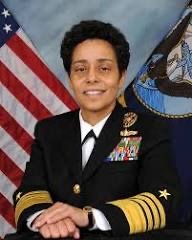
Admiral Michelle Janine Howard (born April 30, 1960) is the first African American woman to command a Navy ship and the first woman of any race to attain the rank of admiral. Born in Riverside, California, she was one of four children of Air Force Master Sergeant Nick Howard and Philippa Howard. She entered the Naval Academy at Annapolis, where she graduated with a BS in Mathematics and was commissioned as an ensign in the Navy.
Her first sea duty was aboard the submarine tender USS Hunley for three years. She served on the aircraft carrier USS Lexington as a main engines officer. She earned the Secretary of the Navy/Navy League Captain Winifred Collins Award. She began service on the ammunition ship, the USS Mount Hood, as the chief engineer which resulted in her participation in Operations Desert Shield and Desert Storm. She reported for duty as first lieutenant on the USS Flint. She became an executive officer on the docking ship USS Tortuga. She sailed to West Africa for a multi-nation training cruise.
She made history when she captained the dock landing ship USS Rushmore with a crew of more than 400 sailors, thus becoming the first African American woman to command a Navy ship. She led Amphibious Squadron Seven, deployed with Expeditionary Strike Group 5. She was promoted to Rear Admiral. She led Expeditionary Strike Group 2, deploying to CENTCOM theater where she commanded Task Force 151. She led Task Force 51, Expeditionary Forces. The event inspired the movie, Captain Phillips. She was the Maritime Task Force leader for BALTOPS.
President Obama lifted the ban on women serving in combat and pushed the effort to place more female soldiers in high-level defense positions. She was promoted to Vice Admiral and held the post of Deputy Commander of US Fleet Forces. She became a full Admiral, the first Navy woman ever to reach a four-star rank. She became the 38th Vice Chief of Naval Operations. She retired in December 2017.
Her recognitions are the NAACP Image Award, Women of Color STEM Career Achievement Award, and the USO Military Woman of the Year. She is married to retired Marine Captain Wayne Cowles. #africanhistory365 #africanexcellence #deltasigmatheta
4 notes
·
View notes
Text
3 notes
·
View notes
Text
HMS Black Joke
To start with, this is a very sensitive subject, namely slavery. Now it is not about praising anyone, because no one should try to make themselves out to be a hero on this subject. after all, almost everyone had their fingers in this very disgusting business. But now some have recognised that this business is not a desirable one and banned it. Among them was the British Parliament in 1807, which created the West Africa Squadron in 1808 to hunt slavers.
Initially the unit was limited to intercepting British slave ships, fining them 100 pound for every slave found aboard, but it expanded to target slavers from other countries. The West Africa Squadron patrolled the 5000 km of the West African coast for 60 years and at its height accounted for 1/6 of the resources of the Royal Navy and Royal Marines. The squadron seized 1,600 vessels and liberated 150.000 slaves.

H.M. Brig Black Joke, tender to HMS Sybille and prizes, Spanish brig Providentia, Brazilian brig Vengador Buenos Ayrean privateer Presidente brigantine El Hassey Spanish brig El Almirante and brigantine Marianna, by Irwin Bevan (x)
One of the most successful ships was poacher- turned- gamekeeper HMS Black Joke, a brig. A 1827 captured slave ship, she had originally sailed under the name of Henrietta. With fair wind Black Joke was capable of overhauling the best on the coast and although only lightly armed she quickly became the scourge of the slavers.
Among Black Joke's most notable conquests was the Spanish brig el Almirante. The slaver was sighted on 1 February 1829 and although her quarry was vastly superior in size and arms Black Joke immediately gave chase. the winds were light and varibale and Black Joke had to resort to sweeps to close the gap. The chase lasted 11 hours under blazing sun and the light was fading as the desperate duel began. When the Spanish vessel finally surrendered it had 15 crewmembers dead and 13 wounded. Black Joke had suffered 6 wounded, two of whom later died. Over 450 slaves were found chained together in appaling conditions in the hold of El Almirante.
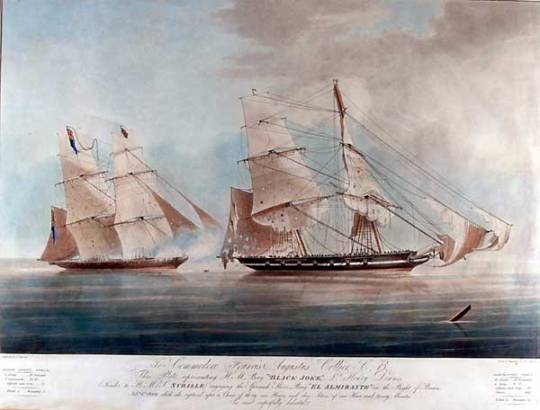
HMS Black Joke firing on the Spanish Slaver El Almirante, by Nicholas Matthew Condy (1816-1851) (x)
In one year alone Black Joke took 22 ships and liberated 7000 slaves. Sometimes she worked in tandem with other ship. In September 1831 she was sailing with the schooner HMS Fair Rosamond off the mouth of the Bonny River when they surprised two Spanish slavers. Recognising the Royal Navx ships the vessels fled back up the river and Black Joke and Fair Rosamond gave chase. As they were overhauled the Spanish began throwing slaves over the side. Some were chained together in pairs and quickly drowned Others tried to make for the shore but were attacked by sharks and torn to pieces. The 4 vessels crammed on all sail as they raced up the river. Eventually the slavers were captured and what remained of their sorry human cargo given their freedom. HMS Black Joke met an inglorious end in May 1832. Her timbers rotten, she was condemned by Admiralty surveyors and burnt.
There was a huge human cost for the men who served in the West Africa Squadron. Much of daily life was tedious and there was little chance of promotion as a result of a celebrated victory in a famous battle. Fever was rife and between 1830 and 1865 some 1600 men in the West Africa Squadron died. In one year about 25% of the officers and men died, a proportion 15 times higher that the navy had ever lost in wartime in any year.
72 notes
·
View notes
Text

Prince Alfred in his Royal Navy midshipman's uniform, c. 1860. He joined the navy at the age of 12 in 1856 (RCT).
After their initial training, Royal Navy cadets of the 1850s and 1860s transferred to the Fleet for at least four years before being able to sit for the exam for lieutenant. Although many would serve on large ships close to home (which were more likely to have a naval instructor aboard), imperialism and global ambitions of the metropole meant that midshipmen could see action:
The China and Far East station, even after the ending of the Second China War in 1860, was a major employer of manpower absorbing over 40 vessels and in excess of 6,000 men over the following decade. The Civil War diverted ships and men on the North American station and trade protection and anti slavery patrols kept at least 15 ships and about 2,000 men employed off the coast of West Africa. Most vessels here were relatively small, shallow draft gun boats under junior command and unlikely to carry cadets or midshipmen by scheme of complement, but they frequently employed them on loan from larger vessels. Thus in the late 1850s and 1860s many 15- and 16-year-old boys received a baptism of fire in small craft up rivers and inside reefs, with expeditionary brigades ashore in China, India, New Zealand or off the coast of Japan. Admiral Sir John Fisher, a future First Sea Lord, saw action as a youngster in 1859, witnessing the death of Midshipman Herbert and the wounding of Midshipman Powlett and Armytage in the failed attack on the Peilo [sic] forts. ... The small wars and policing duties of the era provided early active service for very young officers, many of whom demonstrated considerable devotion to the navy they had so recently joined.
— Harry W. Dickinson, Educating the Royal Navy: Eighteenth- and Nineteenth-Century Education for Officers

Attack and capture of the Forts at the Entrance of the River Pei-ho, China, on the 20th May 1858. By the Allied British and French Gun Boats and Boats of the Squadron in the Gulf of Pechili, print made 1858 (NMM collection).
#midshipman monday#age of sail#age of steam#naval history#royal navy#military history#midshipmen#imperialism#1850s#1860s#prince alfred#naval uniform#dressed to kill
50 notes
·
View notes
Text
African leaders in Sierra Leone played a key role in ending the transatlantic slave trade

Freetown, the capital of Sierra Leone on the west African coast, was named for the freed slaves who were returned to Africa by British members of the movement to end slavery. Founded in 1787 by a group of 400 black Britons from London, the colony ultimately became a refuge for nearly 100,000 people resettled by the British Anti-Slavery Naval Squadron.
As a historian focusing on the impact of abolitionism, I have studied this history and the founding of modern Sierra Leone.
There is a misconception that Britain was the first to abolish the slave trade. It wasn’t the first, but its decision to abolish the trade was backed up by the power of its navy. Sierra Leone’s role in the story shows, however, to enforce that abolition, the British navy had to rely on the support of African states and polities that had already turned against the slave trade.

Africans played an overlooked role in ending the transatlantic slave trade. Sierra Leone’s rich history is testament to that.
The founding of Sierra Leone
The Atlantic Slave Trade began around the 1520s, but the area around Sierra Leone was not a major contributor to the trade before the middle of the 1700s. From 1763 onwards, the number of enslaved people shipped annually from the Sierra Leone coast by British, Portuguese and French traders rarely fell below 1,000 and was often closer to 4,000. Even then, the number of captives was roughly half the number being transported from the Gold Coast (Ghana), a quarter of the number being transported from the Bight of Benin, and a tenth of the number transported from the Angolan coast.
And yet from 1808, it was Sierra Leone – rather than one of the other sites of slave trading – that became the site of British anti-slavery operations. This was because by then, Sierra Leone was the site of an established and growing colony made up of members of the black British diaspora, many formerly enslaved. And the success of that colony was possible in part because of the interest and engagement of the Temne, the Susu, and other African people based in and around the Sierra Leone peninsula.
In 1787, the first group of black Britons arrived on the peninsula as part of a project in self-government and with the support of the London-based abolitionist leaders Granville Sharp and Olaudah Equiano. The first settlement faced hardships and lacked support among the Temne, whose land they were renting.
The settlement grows
In 1791, another group arrived in the colony and sought out a new treaty of settlement. This group chose to immigrate to Sierra Leone from inhospitable Nova Scotia (Canada), where they had been settled by the British government as “black loyalists” after fleeing from slavery during the American Revolution (1776-1783). A new organisation, the Sierra Leone Company, took over the management of the colony from London. Their records show that by the early 1790s, the Temne saw the arrival of these colonists as an opportunity.
King Naimbana, for instance, who negotiated the treaty between the Sierra Leone Company and the Temne, sent his son to London for education. And in their negotiations, company officials noted that the people they were engaging with were keen for opportunities to trade for imported goods without reverting to selling other people.
African role in ending slavery
As I found in my research, it was African demand that was shaping the success of the colony and its mission to shift the coast’s commerce away from the slave trade. Records held at the Huntington Library in California show that local buyers paid a higher price for the “SLC” mark – a price paid in goods and currency, rather than in enslaved captives. One British representative wrote a letter in 1793 to the Sierra Leone Company to complain that “it has become practice with slave traders to bring out guns for trade marked SLC for which they get a rapid sale and a double price in the Rio Nunez” to the north of the colony. He also worried that this was happening with “SLC” cloths.
Although he was unsure of their enthusiasm for the abolition of the slave trade, the British official commented that “their mouths were full of proposals to trade with us and plant cotton and coffee”. And a Susu leader’s deputy launched a verbal attack against the slave traders, telling them:
It is you slave traders who cause all our palavers. It is you who set the people in this country one against another. And what do you bring us for this? We have cloth of our own if you were gone tomorrow we should not be naked. If you were gone we should want but little guns and powder.
This support of the Susu and Temne around Sierra Leone for the colony, its trade, and its African diaspora population meant that the colony seemed like a natural fit for the British when they were looking for a way of enforcing their Slave Trade Act in 1807 to end the Atlantic slave trade. The British based an anti-slave trade naval patrol in the colony, as well as a court for processing captured slave ships.
The Sierra Leone Company was happy to hand over control to the British government, but it was the people on the ground whose successful trading relationships had built a growing city with markets, accommodation, infrastructure and, most importantly, a sense of security for the thousands of resettled enslaved people who would soon see its population soar.

Conclusion
There is a misconception that Britain was the first to abolish the slave trade and that it brought enlightened anti-slavery ideas to Africa. This misconception was used to justify the spread of colonial rule in the 19th century. But the history of Sierra Leone shows that, in order to enforce their abolition decrees, the British had to rely on African states and polities that had already turned against the slave trade.
#African leaders in Sierra Leone played a key role in ending the transatlantic slave trade#slavery#enslavement of Africans in america#transatlantic slavery
10 notes
·
View notes
Text
The British Empire was, in many ways, a force for good.
Nearly everywhere it occupied it:
-raised the standard of living
-developed infrastructure
-promoted education
It also single-handedly ended slavery for much of the world…🧵(thread) pic.twitter.com/hVNQIIu9Rg
— ThinkingWest (@thinkingwest) May 24, 2024
Though Britain had been a global power since the early 17th century, it wasn’t until Napoleon's defeat at Waterloo in 1815 that it emerged as the dominant power.
By eliminating France from the world’s stage, Britain was left without a serious competitor.

The Vienna Treaty that followed favored the Brits, granting them territorial possessions like modern-day South Africa, Trinidad, and Sri Lanka.
These territories served as strategic naval bases Britain used to control its immense empire from all corners of the globe.
The century following Napoleon's defeat is sometimes called the “Pax Britannica,” because of the relative prosperity enjoyed by Europe during this time. The presence of a single world power created stability and kept conflicts to a minimum.

Britain’s unmatched navy is what maintained its dominance.
The British Royal Navy was more than twice the size of the next largest navy. Though their ships weren’t vastly superior to others’, their sailors were at sea continuously making them the best in the world.
British ships controlled most of the key trade routes in Asia, North America, and Africa, allowing its merchants and traders an overwhelming advantage compared to other nations—Britain got incredibly rich off sea power.
But Britain didn’t just use its Naval supremacy to fill its coffers. Its navy actually became a source of peace and stability.
British ships were on the frontline during one of the darkest episodes in Western history: the slave trade.

Decades before the American Civil War and 13th amendment ended slavery in the US, Britain passed two anti-slavery laws: the “Slave Trade Act 1807” banning the slave trade around the empire, and the “Slavery Abolition Act 1833” which officially made it illegal to own slaves.
Britain enforced its legislation via their strong navy.
Ship captains who were caught transporting slaves were subject to fine initially, but soon the Royal Navy declared all perpetrators of slave trading to be treated the same as pirates—the punishment for piracy was death.
Britain's ships were the “global policemen” in the 19th century, and along the West coast of Africa became highly successful in capturing slave ships and freeing slaves.
They basically declared war on the African slave trade in a move called the “blockade of Africa.”

In 1808, a fleet called the West Africa Squadron was formed to patrol the African coast and catch slave ships. In the following decades they seized an estimated 1,600 slave ships and freed a whopping 150,000 Africans slaves.
African kingdoms were also encouraged to sign anti-slavery treaties. Over 50 African rulers signed them, and for ones that didn't, “corrective action” was taken—sometimes fighting slavery meant using the full force of the British Navy.
One example was the deposition of Oba Kosoko of Lagos in 1851.
After refusing to sign an anti-slavery treaty, the HMS Bloodhound and HMS Tartar besieged Lagos and deposed Kosoko. He was quickly replaced with an anti-slavery rival named Akitoye.
While some illegal trade continued in far-off regions, by the middle of the 19th-century the Atlantic slave trade was almost completely eradicated.
Slavery outside the empire’s jurisdiction, however, would continue for hundreds of years in some places.

No nation on earth did more to eliminate slavery than Britain.
Though empires are often viewed as inherently tyrannical, Britain’s war on slavery shows that immense power can, in some cases, be channeled for good.
Undoubtedly some terrible things were done under its rule, but Britain's success against slavery leaves one questioning whether empire per se is always a bad thing. Is it possible to have a benevolent empire?

#the british empire#great britain#history#twitter repost#19th century#1800s#victorian#european history#world history#british empire#slavery
1 note
·
View note
Video
youtube
DeSantis said no one questioned slavery before Americans. See Van Jones ...
CHRONOLOGY-Who banned slavery when?
By Reuters Staff
3 MIN READ
(Reuters) - Britain marks 200 years on March 25 since it enacted a law banning the trans-Atlantic slave trade, although full abolition of slavery did not follow for another generation.
Following are some key dates in the trans-atlantic trade in slaves from Africa and its abolition.
1444 - First public sale of African slaves in Lagos, Portugal
1482 - Portuguese start building first permanent slave trading post at Elmina, Gold Coast, now Ghana
1510 - First slaves arrive in the Spanish colonies of South America, having travelled via Spain
1518 - First direct shipment of slaves from Africa to the Americas
1777 - State of Vermont, an independent Republic after the American Revolution, becomes first sovereign state to abolish slavery
1780s - Trans-Atlantic slave trade reaches peak
1787 - The Society for the Abolition of the Slave Trade founded in Britain by Granville Sharp and Thomas Clarkson
1792 - Denmark bans import of slaves to its West Indies colonies, although the law only took effect from 1803.
1807 - Britain passes Abolition of the Slave Trade Act, outlawing British Atlantic slave trade.
- United States passes legislation banning the slave trade, effective from start of 1808.
1811 - Spain abolishes slavery, including in its colonies, though Cuba rejects ban and continues to deal in slaves.
1813 - Sweden bans slave trading
1814 - Netherlands bans slave trading
1817 - France bans slave trading, but ban not effective until 1826
1833 - Britain passes Abolition of Slavery Act, ordering gradual abolition of slavery in all British colonies. Plantation owners in the West Indies receive 20 million pounds in compensation
- Great Britain and Spain sign a treaty prohibiting the slave trade
1819 - Portugal abolishes slave trade north of the equator
- Britain places a naval squadron off the West African coast to enforce the ban on slave trading
1823 - Britain’s Anti-Slavery Society formed. Members include William Wilberforce
1846 - Danish governor proclaims emancipation of slaves in Danish West Indies, abolishing slavery
1848 - France abolishes slavery
1851 - Brazil abolishes slave trading
1858 - Portugal abolishes slavery in its colonies, although all slaves are subject to a 20-year apprenticeship
1861 - Netherlands abolishes slavery in Dutch Caribbean colonies
1862 - U.S. President Abraham Lincoln proclaims emancipation of slaves with effect from January 1, 1863; 13th Amendment of U.S. Constitution follows in 1865 banning slavery
1886 - Slavery is abolished in Cuba
1888 - Brazil abolishes slavery
1926 - League of Nations adopts Slavery Convention abolishing slavery
1948 - United Nations General Assembly adopts Universal Declaration of Human Rights, including article stating “No one shall be held in slavery or servitude; slavery and the slave trade shall be prohibited in all their forms.”
4 notes
·
View notes
Text

B-52 bombers return to Europe to strengthen ties with NATO allies
Fernando Valduga By Fernando Valduga 08/19/2022 - 08:00 AM in Military
U.S. Air Force B-52H Stratofortress aircraft, along with aviators and support equipment from the 5th Bomber Wing of Minot Air Base, North Dakota, arrived on August 18 in the area of responsibility of the U.S. European Command to train with U.S. allies and partners.
The aircraft will operate from the RAF Base in Fairford, England. Sending strategic bombers to the United Kingdom helps to exercise Fairford personnel as the advanced operational location of the United States Air Forces in Europe (USAFE) for bombers.
"These bomber Task Force (BTF) missions throughout Europe offer a great opportunity to improve our combined readiness, promote interoperability and demonstrate our global power projection alongside our allies," said U.S. Air Force General James Hecker, commander of USAFE-AFRICA and AIRCOM. "Our maximum strength in the European area of operations is the lethality of the joint force - our ability to train and operate with our allies and partners as a layered, capable and reliable combat team."

This training improves integration between air and ground forces, as well as interoperability between partner nations, which is crucial to ensure that NATO forces can work together effectively in operations and warfare.
Unprecedentedly, the Royal Norwegian Air Force released photos of F-35A fighters flying alongside American bombers and Swedish Gripens. The U.S. bombers joined two Swedish JAS39 Gripen and two Norwegian F-35s for training west of Andoya, northern Norway.

“In recent years, our specialized air and ground forces have cooperated in complex air operations with American and Swedish forces,” Maj. Gen. Rolf Folland, head of the Royal Norwegian Air Force, said. “Today, we operate side by side once again and demonstrate our solid training progression as we continue to add more elements to strengthen our collective capabilities.”
A prominent aspect of today's arrival mission was air integration between U.S., Norway and Sweden military aircraft, while performing rapid global power projection missions to support the mutual defense of NATO partners and allies, while achieving effects in various domains.
"Witnessing our nation's Gripen fighters flying alongside several of the most powerful military aircraft in the United States visually shows NATO's strength and solidarity," said Maj. Gen. Carl-Johan Edström, commander of the Swedish Air Force. “These moments really capture the military power that exists within NATO - as individual nations, but, most importantly, as a unified Alliance.”
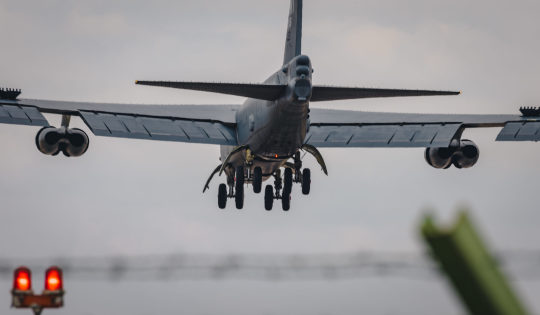
BTF operations are routinely carried out throughout the European continent, highlighting NATO's commitment to preventing the opponent's aggression against the Alliance.
"Our strategic bomber missions demonstrate our ever-ready global attack capability," said U.S. Air Force Lieutenant Colonel Ryan Loucks, commander of the BTF's 23rd Expeditionary Bomber Squadron. “The B-52 remains a universally recognized symbol of America's guarantees to our allies and partners.”
BTF missions offer a way to routinely evaluate and evaluate the readiness of strategic assets to safeguard the security and stability of the European area of operation.
Tags: Military AviationBoeing B-52H StratofortressNATO - North Atlantic Treaty OrganizationUSAF - United States Air Force / U.S. Air Force
Previous news
FAB starts Tápio Exercise in Campo Grande
Next news
Airport auction led by Congonhas generates R$ 2.72 billion in initial contribution
Fernando Valduga
Fernando Valduga
Aviation photographer and pilot since 1992, he has participated in several events and air operations, such as Cruzex, AirVenture, Dayton Airshow and FIDAE. He has works published in a specialized aviation magazine in Brazil and abroad. He uses Canon equipment during his photographic work in the world of aviation.
Related news
MILITARY
IMAGES: Towards Pitch Black, Indian Su-30 fighters are refueled in flight by French A330 MRTT
08/19/2022 - 12:00 PM
MILITARY
UAC and Russian Ministry of Defense discuss development of Su-57 biplace fighter
08/19/2022 - 11:00 AM
BRAZILIAN AIR FORCE
FAB starts Tápio Exercise in Campo Grande
08/19/2022 - 07:27 AM
BRAZILIAN AIR FORCE
KC-390 Millennium carries out first in-flight refueling mission at the FAB
08/18/2022 - 7:15 PM
MILITARY
Russian MiG-31 fighters suspected of violating Finnish airspace
08/18/2022 - 7:03 PM
MILITARY
Could a supersonic aircraft carry out high-risk crisis response missions?
08/18/2022 - 6:00 P.M.
HOME Main Page Editorials Information Events Collaborate SPECIALS Advertise About
Cavok Brasil - Digital Tchê Web Creation
Commercial
Executive
Helicopters
History
Military
Brazilian Air Force
Space
SPECIALS
Cavok Brasil - Digital Tchê Web Creation
14 notes
·
View notes
Photo

“Another Day” 80 Years Ago, Yesterday – November 20th, 1942: 331 miles northeast of Durban, South Africa, the American Liberty Ship “SS Pierce Butler” (sister ship, Photo 1) is torpedoed by U-177 (Type IXD2). As the ship settles, her gunners open fire in the vicinity of the U-177 to prevent her from closing in and finishing her off. All 62 crewmen safely abandon ship, and are rescued. 56 miles northeast of Maputo, Mozambique, the Greek steamer “SS Corinthiakos” (Photo 2) is sunk by U-181 (IX2D). 11 Dead, 21 Survivors. 104 miles southeast of Sagres, Spain, an attack on Convoy KMS-3 by U-263 (VIIC) yields two: the British steamer “SS Grangepark” (Photo 3), with 4 Dead and 67 Survivors, and the Norwegian freighter “SS Prins Harald” (No Photo) with 3 Dead and 49 Survivors. The Germans lose another landing craft in the Mediterranean: Marinefahrprahm F-358, (similar craft, Photo 4), caught in heavy seas during a storm, washes up south of Benghazi, Libya and is blown up by her crew to prevent capture. Details are unspecified, but the Italian Navy’s auxiliary cruiser “Lago Tana” (her or sister ship, photo 5), carrying Army troops to reinforce North Africa, is found by twin-engine Bristol Beaufighters (Photo 6) of 227 Squadron of the Royal Air Force. A vicious aircraft with a Class-1 Attitude Problem, it carries more firepower than several other planes put together – 4 X 20mm cannons, 6 X .303 machine guns, 8 X rockets or 2 X 250-lb bombs OR… a torpedo. Ideally suited for the ground attack role, if there is one plane you don’t want attacking you, this is it – and Lago Tana is being attacked by a whole flight of them. They quickly hit her with torpedoes and rake her with strafing runs. She is then set upon by three Bristol Beaufort torpedo bombers (Photo 7), who finish her off. Lago Tana, aflame, goes under. Her losses are horrific – out of a crew of 90, with 127 Army passengers… there are Two Survivors. 215 men are killed in the attack. It’s also a rough week for US Navy Patrol Boats – the previous day, one blows up in Panama; today USS YP-405 (no photo) burns to the waterline and sinks 12 miles northeast of Key West, Florida. Just another day… (at Fort Hancock, New Jersey) https://www.instagram.com/p/ClP4JGSt4qc/?igshid=NGJjMDIxMWI=
4 notes
·
View notes
Photo
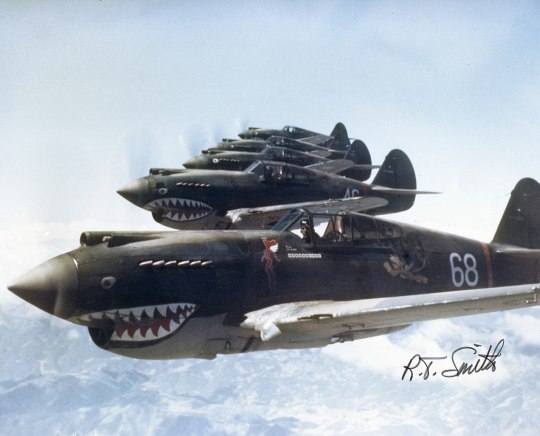
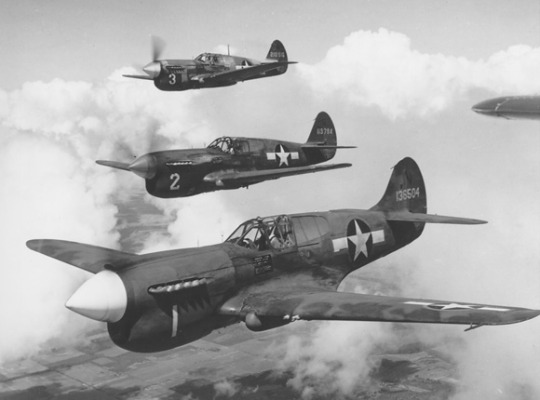

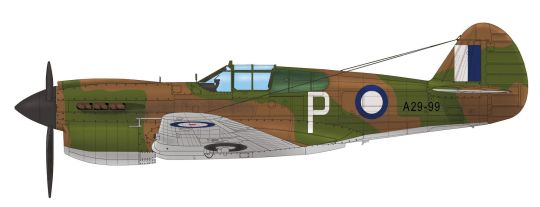

The Curtiss P-40 Warhawk is an American single-engined, single-seat, all-metal fighter and ground-attack aircraft that first flew in 1938. The P-40 design was a modification of the previous Curtiss P-36 Hawk which reduced development time and enabled a rapid entry into production and operational service. The Warhawk was used by most Allied powers during World War II, and remained in frontline service until the end of the war. It was the third most-produced American fighter of World War II, after the P-51 and P-47; by November 1944, when production of the P-40 ceased, 13,738 had been built,[3] all at Curtiss-Wright Corporation's main production facilities in Buffalo, New York.
P-40 Warhawk was the name the United States Army Air Corps gave the plane, and after June 1941, the USAAF adopted the name for all models, making it the official name in the U.S. for all P-40s. The British Commonwealth and Soviet air forces used the name Tomahawk for models equivalent to the original P-40, P-40B, and P-40C, and the name Kittyhawk for models equivalent to the P-40D and all later variants.
P-40s first saw combat with the British Commonwealth squadrons of the Desert Air Force in the Middle East and North African campaigns, during June 1941.[4][5] No. 112 Squadron Royal Air Force, was among the first to operate Tomahawks in North Africa and the unit was the first Allied military aviation unit to feature the "shark mouth" logo,[6][7] copying similar markings on some Luftwaffe Messerschmitt Bf 110 twin-engine fighters.[6] [N 1]
The P-40's lack of a two-speed supercharger made it inferior to Luftwaffe fighters such as the Messerschmitt Bf 109 or the Focke-Wulf Fw 190 in high-altitude combat and it was rarely used in operations in Northwest Europe. However, between 1941 and 1944, the P-40 played a critical role with Allied air forces in three major theaters: North Africa, the Southwest Pacific, and China. It also had a significant role in the Middle East, Southeast Asia, Eastern Europe, Alaska and Italy. The P-40's performance at high altitudes was not as important in those theaters, where it served as an air superiority fighter, bomber escort and fighter-bomber. Although it gained a postwar reputation as a mediocre design, suitable only for close air support, more recent research including scrutiny of the records of individual Allied squadrons indicates that this was not the case: the P-40 performed surprisingly well as an air superiority fighter, at times suffering severe losses, but also inflicting a very heavy toll on enemy aircraft.[9] Based on war-time victory claims, over 200 Allied fighter pilots – from the UK, Australia, New Zealand, Canada, South Africa, the US and the Soviet Union – became aces flying the P-40. These included at least 20 double aces,[10] mostly over North Africa, China, Burma and India, the South West Pacific and Eastern Europe. The P-40 offered the additional advantages of low cost and durability, which kept it in production as a ground-attack aircraft long after it was obsolescent as a fighter.
https://en.wikipedia.org/wiki/Curtiss_P-40_Warhawk
4 notes
·
View notes
Text
US Army Prepositioned Stocks-2 Grid Set in Czechia for DEFENDER 24
The U.S. Army Prepositioned Stocks-2 staging grid is set at Libava, ready to issue an entire cavalry APS-2 equipment set to the 1st Squadron, 150th Cavalry Regiment from the West Virginia Army National Guard for DEFENDER 24. The 405th Army Field Support Brigade’s Army Field Support Battalion-Africa has established an Equipment Configuration and Hand-off Area in Libava, and over the course of the next couple of days the battalion from Livorno, Italy, will be conducting technical inspections of all the tactical vehicles, basic issue items and support equipment with Soldiers from the 1st Squadron, 150th Cav. Regt., the gaining tactical unit. The cavalry equipment set was transported from Coleman Army Prepositioned Stocks-2 worksite in Mannheim, Germany, using commercial line-haul transporters. The contracted workforce at Coleman, approximately 50 personnel, traveled from there to Libava to help set the staging grid for DEFENDER 24 and assist with the issue of equipment to the 1st Squadron, 150th Cav. Regt. at the ECHA site. Command and control of the ECHA site is the responsibility of AFSBn-Africa.
The U.S. Army Prepositioned Stocks-2 staging grid is set at Libava, ready to issue an entire cavalry APS-2 equipment set to the 1st Squadron, 150th Cavalry Regiment from the West Virginia Army National Guard for DEFENDER 24. The 405th Army Field Support Brigade’s Army Field Support Battalion-Africa has established an Equipment Configuration and Hand-off Area in Libava, and over the course of the…

View On WordPress
0 notes
Text

🎧🎧Wide Release Blitz 🎧🎧
Regency Romance Fans, This one's for you!
Pride of Honor (Men of the Squadron, Book 1) by @authorandreakstein
Narrated by @arthurrowanactor & Heather Tracy
Published & Produced by @PinkFlamingo_Productions
Featured on @The_Flock_on_Tour
PFP Store 🎧 https://bit.ly/47x2taR
Audible US 🎧 https://bit.ly/3F1H9Pm
Audiobooks.com 🎧 https://bit.ly/3SjfsZz
Storytel 🎧 https://bit.ly/4b0CThI
Kobo 🎧 https://bit.ly/3Va5fOP
Libro.fm 🎧 https://bit.ly/3O0Bn56
Downpour 🎧 https://bit.ly/3tM83Zo
Nook 🎧 https://bit.ly/3O4DyEC
Google Play 🎧 https://bit.ly/3U0Ljze
Everand 🎧 https://bit.ly/47HkV0t
Spotify 🎧 https://bit.ly/3Shnq5q
Chirp Books 🎧 https://bit.ly/45GN2ft
Hoopla 🎧 https://bit.ly/3SiQE3D
Blurb:
Two people determined to marry anyone but each other
She must marry to save her inheritance....
Sophie Brancelli, the orphaned illegitimate child of a duke’s daughter, must ensure her marriage to a suitable gentleman of the ton before her 21st birthday, or she’ll be destitute. Her grandmother, the duchess, provided her with a huge inheritance, but with strings attached.
He needs the right marriage to climb the ranks....
Captain Arnaud Bellingham intends to ascend the ranks of the Royal Navy with a loveless marriage of convenience. But those plans go awry when he rescues a madcap Italian poetess from kidnappers—a Miss Sophie Brancelli.
Will pride of honor lead to love?
Once Bellingham realizes someone means to harm Sophie to keep her from inheriting, he cannot abandon her to the perils of the mad whirl of a London Season. Although he comes to realize making her his own would protect her from harm, how could he then sail away from a loving, beautiful woman like Sophie to patrol the treacherous waters off West Africa?
Grab your copy today, and embark on a journey of romance, adventure, and mystery!
#NowLive #NewRelease #ReleaseBlitz #PinkFlamingoProductions #TheFlockonTour #PrideofHonorAudioTour #AndreaKStein #HeatherTracy #ArthurtRowan #HistoricalRomance #RegencyRomance #ForcedMarriage
0 notes
Text
Watch "The West Africa Squadron of the British Empire fought back against the Slave Trade #history #africa" on YouTube
0 notes
Text
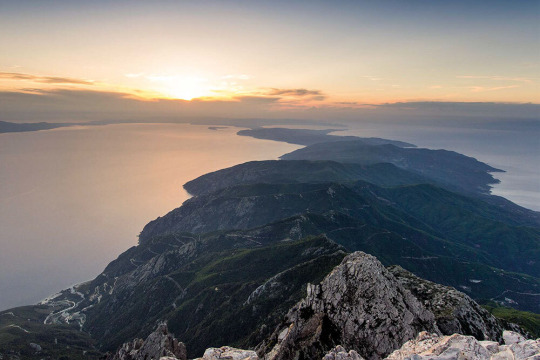
LAND AND SEA : This Persian Marvel Was Lost For Millennia! Only one ancient account mentions the existence of Xerxes Canal, long thought to be a tall tale. But archaeology is confirming that Persia's engineering triumph was real. This view from Mount Athos overlooks the site of what was once the Xerxes Canal. It was constructed across the narrowest part of the Mount Athos Peninsula, connected to the mainland some 28 miles north. Natalino Russo/Fototeca 9X12
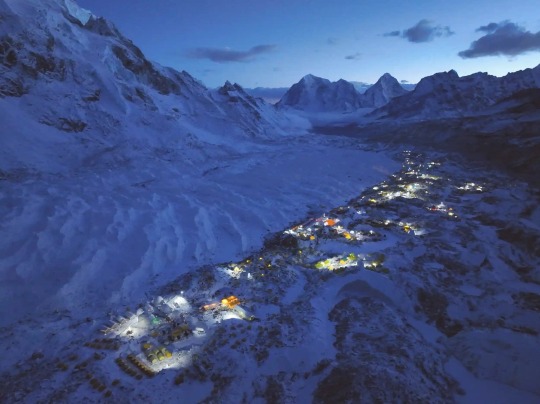
Nepal 🇳🇵! Night falls over Mount Everest base camp. Photograph: Reuters

Johannesburg, South Africa 🇿🇦! Autumn colours are reflected in the waters of the Emmarentia Dam reservoir as the southern hemisphere moves into autumn. Photograph: Kim Ludbrook/EPA

Boorowa, Australia 🇦🇺! Businessman Andrew ‘Twiggy’ Forrest waves an Australian flag as he stands on top of a wind turbine during the opening of Squadron Energy’s Bango wind farm. Photograph: Lukas Coch/AAP
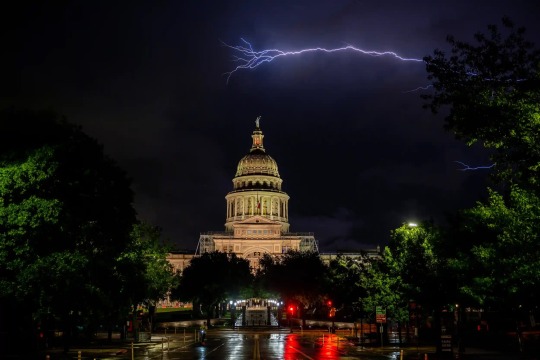
Austin, USA ��🇸! Lightning flashes behind the Texas State Capitol. Photograph: Brandon Bell/Getty Images

New York, New York, USA 🇺🇸! The opening of sculptor Carole Feuerman solo outdoor public art show, Sea Idylls, on Park Avenue in NYC. The hyperrealistic sculptures in conjunction with Les Galeries Bartoux and Patrons of Park Avenue line the median. Photograph: Milo Hess/ZUMA Press Wire/Shutterstock

Moscow, Russia 🇷🇺! People watch a Yars intercontinental ballistic missile launcher on Tverskaya Street in Moscow during a rehearsal of a military parade which will take place at Red Square on 9 May to commemorate the victory over Nazi Germany in the second world war. Photograph: Maxim Shipenkov/EPA
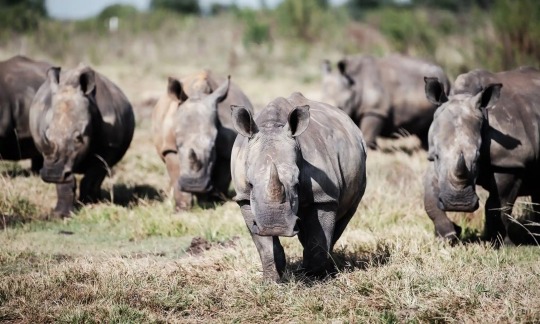
South Africa 🇿🇦! Wild white rhinos (Ceratotherium simum) in the north-west province of South Africa. South Africa is home to nearly 80% of the world’s rhinos, making it a hotspot for poaching. The government said 448 of the endangered animals were killed across the country last year, only three fewer than in 2021, despite increased protection efforts at national parks such as Kruger. Photograph: Luca Sola/AFP/Getty Images
0 notes